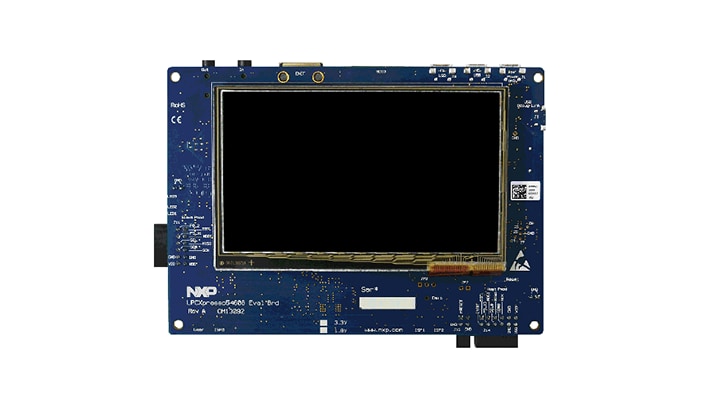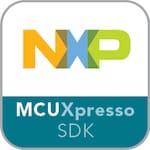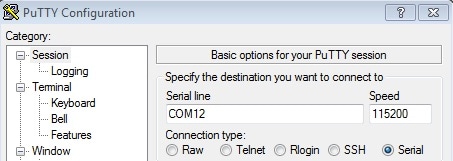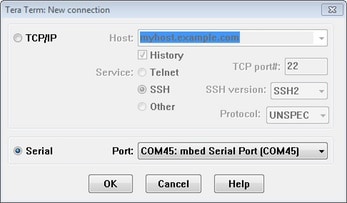Getting Started with the OM13092
Contents of this document
-
Plug It In
-
Get Software
-
Build, Run
Sign in to save your progress. Don't have an account? Create one.

Purchase your LPCXpresso Board for LPC5460x
1. Plug It In
Let's take your LPCXpresso54608 board for a test drive!
2. Get Software
Choose a Development Path:
MCUXpresso SDK
- True debug support via SWD and JTAG
- High software flexibility
- Full set of peripheral drivers with source
- Application examples and project files
Arm mbed Online Development Site
- Online compiler, no SWD or JTAG debug
- Simple, heavily abstracted programming interface
- Useful but limited drivers with source
- Community-submitted examples
Selecting mbed will direct you to the mbed developer website.
2.1 Getting Started with the MCUXpresso SDK!
The MCUXpresso Software Development Kit (SDK) is complimentary and includes full source code under a permissive open-source license for all hardware abstraction and peripheral driver software.
Click below to download a pre-configured SDK release for the LPCXpresso54608, which includes versions for MCUXpresso IDE, Keil MDK and IAR EWARM.
 Get SDK
Get SDK
You can also use the online MCUXpresso web tool to create a custom SDK package for the LPCXpresso54608 using the SDK builder.
2.2 Install your toolchain
NXP offers a free, GNU/Eclipse based toolchain called MCUXpresso IDE.
 Get MCUXpresso IDE
Get MCUXpresso IDE
Want to use a different toolchain?
No problem! The MCUXpresso SDK includes support for other tools such as IAR and Keil.
 To set up your LPCXpresso54608 for use with 3rd party tools, first install
LPCScrypt in order to install the board’s device drivers. The video below shows how to use LPCScrypt to program your board’s debug probe using this utility.
To set up your LPCXpresso54608 for use with 3rd party tools, first install
LPCScrypt in order to install the board’s device drivers. The video below shows how to use LPCScrypt to program your board’s debug probe using this utility.
2.3 MCUXpresso Config Tools
The MCUXpresso Config Tool is an integrated suite of configuration tools that guides users in creating new MCUXpresso SDK projects, and provides pin and clock tools to generate initialization C code for custom board support.
 Get MCUXpresso Config Tools
Get MCUXpresso Config Tools
2.4 Serial terminal
Most of the MCUXpresso SDK examples set up for IAR and Keil tools use the MCU UART for printf output, and this is also an option for the MCUXpresso IDE. If you are not sure how to use a terminal application try one of these tutorials:
Not sure how to use a terminal application? Try one of these tutorials: Tera Term Tutorial, PuTTY Tutorial.
3. Build, Run
3.1 Explore the MCUXpresso SDK Example Code
The MCUXpresso SDK comes with a long list of example applications code. To see what's available, browse to the SDK boards folder of your SDK installation and select your board, the LPCXpresso54608 (
To learn more about specific example code, open the readme.txt file in an example’s directory.
3.2 Build, Run and Debug MCUXpresso SDK Examples
If one or more of the demo applications or driver examples sounds interesting, you're probably wanting to know how you can build and debug yourself. The Getting Started with MCUXpresso SDK guide provides easy, step-by-step instructions on how to configure, build and debug demos for all toolchains supported by the SDK.
Use the guide below to learn how to open, build and debug an example application using MCUXpresso IDE.
Using a different toolchain?
Use IAR EWArm
Build an Example Application
The following steps guide you through opening the hello_world example application. These steps may change slightly for other example applications as some of these applications may have additional layers of folders in their path.
-
If not already done, open the desired demo application workspace. Most example application workspace files can be located using the following path:
1
<install_dir >/boards/<board_name >/<example_type >/ <application_name>/iar </application_name> </example_type> </board_name> </install_dir>Using the the hello_world demo as an example, the path is located in:
1
<install_dir> /boards/evkmimxrt1050/demo_apps/hello_world/iar/hello_world.eww </install_dir> -
Select the desired build target from the drop-down.
For this example, select the “hello_world – flexspi_nor_debug” target.

-
To build the demo application, click the “Make” button, highlighted in red below.

Run an Example Application
To download and run the application, perform these steps:
- Connect the development platform to your PC via USB cable.
-
Open the terminal application on the PC, such as PuTTY or TeraTerm, and connect to the debug COM port. Configure the terminal with these settings:
- 115200 baud rate, (reference BOARD_DEBUG_UART_BAUDRATE variable in board.h file)
- No parity
- 8 data bits
- 1 stop bit
-
In IAR, click the "Download and Debug" button to download the application to the target.

-
The application is then downloaded to the target and automatically runs to the main() function.
-
Run the code by clicking the "Go" button to start the application.

-
The hello_world application is now running and a banner is displayed on the terminal. If this is not true, check your terminal settings and connections.

Run a Demo Using Keil® MDK/μVision
Install CMSIS Device Pack
After the MDK tools are installed, Cortex® Microcontroller Software Interface Standard (CMSIS) device packs must be installed to fully support the device from a debug perspective. These packs include things such as memory map information, register definitions and flash programming algorithms. Follow these steps to install the IMXRT105x CMSIS pack.
- Open the MDK IDE, which is called µVision. In the IDE, select the "Pack Installer" icon.
- In the Pack Installer window, navigate to the Devices tab and select the i.MX RT Series under NXP.
- In the Packs tab, install the DFP for the EVKB-IMXRT1050 board. The DFP is named NXP::MIMXRT1052_DFP. Click on the "Install" button next to the pack. This process requires an internet connection to successfully complete.
- After the installation finishes, close the Pack Installer window and return to the µVision IDE.



Build an Example Application
The following steps will guide you through opening the hello_world application. These steps may change slightly for other example applications as some of these applications may have additional layers of folders in their path.
-
If not already done, open the desired example application workspace in:
1
<install_dir >/boards/<board_name >/<example_type >/ <application_name> /mdk</application_name> </example_type> </board_name> </install_dir>The workspace file is named <demo_name>.uvmpw, so for this specific example, the actual path is: </demo_name>
1
<install_dir> /boards/evkmimxrt1050/demo_apps/hello_world/mdk/hello_world.uvmpw </install_dir> -
To build the demo project, select the "Rebuild" button, highlighted in red.

-
The build will complete without errors.
Run an Example Application
To download and run the application, perform these steps:
- Connect the development platform to your PC via USB cable.
-
Open the terminal application on the PC, such as PuTTY or TeraTerm, and connect to the debug serial port number. Configure the terminal with these settings:
- 115200 baud rate, (reference BOARD_DEBUG_UART_BAUDRATE variable in board.h file)
- No parity
- 8 data bits
- 1 stop bit
- After the application is properly built, click the "Load" button to download the application to the target.

-
To debug the application, click the “Start/Stop Debug Session” button, highlighted in red.

- Run the code by clicking the “Run” button to start the application.

-
The hello_world application is now running and a banner is displayed on the terminal. If this is not true, check your terminal settings and connections.

PuTTY Tutorial
PuTTY Tutorial
PuTTY is a popular terminal emulation application. This program can be used to display information sent from your NXP development platform's virtual serial port.
- Download PuTTY using the button below. After the download, run the installer and then return to this webpage to continue.
- Launch PuTTY by either double clicking on the *.exe file you downloaded or from the Start menu, depending on the type of download you selected.
- Configure In the window that launches, select the Serial radio button and enter the COM port number that you determined earlier. Also enter the baud rate, in this case 115200.
- Click Open to open the serial connection. Assuming the board is connected and you entered the correct COM port, the terminal window will open. If the configuration is not correct, PuTTY will alert you.
- You're ready to go

Tera Term is a very popular open source terminal emulation application. This program can be used to display information sent from your NXP development platform's virtual serial port.
Tera Term Tutorial
Tera Term Tutorial
Tera Term is a very popular open source terminal emulation application. This program can be used to display information sent from your NXP development platform's virtual serial port.
- Download Tera Term from SourceForge. After the download, run the installer and then return to this webpage to continue.
- Launch Tera Term. The first time it launches, it will show you the following dialog. Select the serial option. Assuming your board is plugged in, there should be a COM port automatically populated in the list.
- Configure the serial port settings (using the COM port number identified earlier) to 115200 baud rate, 8 data bits, no parity and 1 stop bit. To do this, go to Setup -> Serial Port and change the settings.
- Verify that the connection is open. If connected, Tera Term will show something like below in it's title bar.
- You're ready to go


